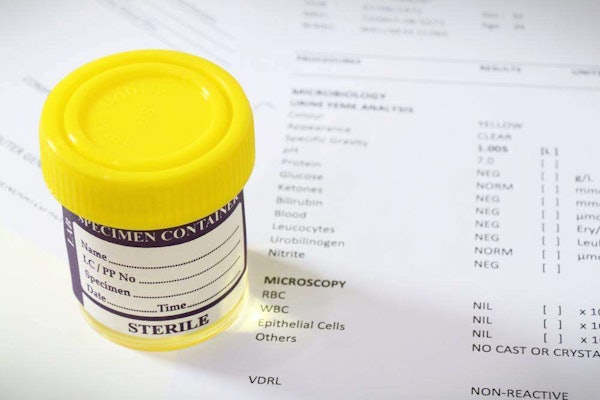September Health Hero: Joe Martin
Joe Martin is trucker with a mission: He wants to convert sedentary drivers into active, healthy, fit ones. For the last 20 years, he’s practiced what he preaches, eating healthy food and exercising every day. The FedEx Freight driver from Porter, Texas, says he’s in just as good shape at age 64 as many much younger drivers who don’t take care of their bodies. The common excuse – “I can’t work out because I’m stuck in the truck” – doesn’t hold water for Martin. He always found ways to incorporate a fitness routine into his trucking life. In fact, he’s done most of his exercises in the comfort of his own truck.
“Over the years, the cabs became more exercise friendly, especially the air-ride seat and steering wheel with all the adjustment options,” he says. “It made it much easier to do the exercises in the cab.” He devised a 35-minute in-cab routine that worked all the major muscle groups and got his heart rate up. When he’d try to get other truckers to follow suit, he says he’d hear the same excuses over and over. Finally, he invested his time and money into producing an instructional video. He dubbed it “Truckercise” and is selling it online and in some truckstops.

The 200-pound trucker has been driving for 47 years and says he was just like everyone else in the beginning. “I’d just sit around, eating junk, trying to fill the boredom,” he says. But after seeing his weight begin to creep up, he decided a healthy lifestyle was the way to go. He’s maintained the same weight ever since, but more importantly, he says he feels more alert and strong than when he was younger. “I handle stress better and feel better overall,” he says. When he’s not working out, Martin enjoys riding his motorcycle, working in the yard and spending time with his family.
Personal: Martin and his wife, Carol, have five children and two grandchildren.
What’s your favorite motto? “Hey drivers, did you ‘Truckercise’ today?” In the beginning, nobody knew what I was talking about, but the word is getting out and I’ve got a lot more truckers asking me for help.
What’s your advice to a trucker just getting started on an exercise routine? Start small, do a little bit at a time and gradually work your way up. Don’t get overtired, or you’ll get discouraged.
What’s the biggest challenge truckers face in the fitness quest? They have to change their thinking and their way of life. It’s hard out there, and adding exercise instead of sitting back and watching a movie can seem like a hard thing to do. But eventually it becomes a part of your life that you enjoy.
What’s been your biggest health challenge? Three years ago I quit smoking, cold turkey, after smoking for 50 years. I didn’t gain any weight and haven’t had one cigarette since I quit. I’ll never go back, either. I credit it to strong willpower and being in good shape.
How do you handle food choices on the road? I eat a lot of lean meat, like turkey, and snack on cut-up veggies, like celery and carrots. I don’t deprive myself of the occasional treat, but I have to use my willpower to limit them.
What’s your regular exercise routine? I do the Truckercise program twice a day and fill in with brisk walking when I can. I use a 10-pound dumbbell but recommend you start off with lighter weights and work up.
To order your copy of Truckercise, visit www.truckercise.net.
Nominate Health Heroes
Do you know any truckers who have worked hard to become more healthy? Maybe they’ve quit smoking, started an exercise program, controlled their sleep apnea or changed their eating habits. E-mail [email protected] or send to Truckers News Fit for the Road, 3200 Rice Mine Rd. NE, Tuscaloosa, AL 35406.
Health Question of the Month:
I am a 32-year-old trucker who is in fairly good health. I have a family history of diabetes and am concerned about my belly fat. It’s out of proportion to the rest of my body, and my doctor says it’s got to go. Why is he so concerned, and what can I do to reduce belly fat?
– Patrick from Nashville, Tenn.
Pam Whitfield is a Chicago-based registered dietician.
You’re smart to be concerned about that excess belly weight. How do you know if you’re at risk? Take out a tape measure and see just how big your waist – just below your navel and above your hips – really sizes out. For men, over 40 in. is a risk; for women, over 35 in. can predict future health issues.
Men tend to gain weight at the belly, creating an “apple” shape. Women gain weight in their hips and thighs, a “pear” shape. “Apple” is more dangerous, because it’s all around the middle. Abdominal fat may increase your bad cholesterol (LDL) and triglyceride levels. That raises your risk of heart disease, stroke and hypertension (sleep apnea, too). Belly fat also can change the way your body processes insulin, leading to higher blood sugars and, ultimately, diabetes.
How to lose the big belly? Eat less and increase your physical activity. Eat three moderately sized meals each day with a couple of small, healthy snacks. Include plenty of foods with fiber: fruits, veggies and whole grains. They’re low-calorie, and they’ll fill you up. And, no, there are no foods that will secretly add fat to your belly any more than there are magical foods that will melt it away!
Finally, skip supplements that promise you’ll lose the belly fat in 30 days or less. They promise to be the “silver bullet.” Really, they’ll only lighten your wallet.
Ronald Rush, M.D., is a family care physician with Highway Health Care and clinical director of Med- Xpress Health Care in Texarkana, Texas.
There is an abundance of data that shows a close relationship between belly fat and many serious heart health problems. Men with excess belly fat are at a much higher risk for heart attacks. Belly fat is not isolated fat. Men with excess waist lines generally have excess internal fat also. This translates into liver and other body organ fat. A body high in overall fat also carries a much higher risk of diabetes and gallbladder, liver and other organ disease. It also has been suggested that there is a link to dementia and memory problems. With a family history of diabetes and a personal problem of high belly fat, you are a ticking time bomb, and your doctor knows it. Belly fat is an unusually hard fat to lose. This is a good reason to avoid getting it altogether. Now that you have the belly fat, the safest and healthiest way to lose it is through good old-fashioned diet and exercise. You did not gain the fat in a few months. Do not set your sights on losing it in a few months. Work to lose three or four pounds a month, and in a year you will be down 36 to 48 pounds. As always, see your family doctor before starting any exercise or diet plan.
Linda Dunn is a fitness expert from Tuscaloosa, Ala.
At 32 years old, your body is beginning to lose muscle if you do not exercise regularly. Belly fat is particularly hard to tackle. You should focus on building muscle mass and adding vigorous aerobic exercise to your daily routine to reduce belly fat. Some options for aerobic exercise (at least 25-30 minutes a day) are walking, running, jumping rope, biking or swimming. It is time to investigate some strength-training exercise with weights to help build the lean muscle tissue. You might want to contact the American Council on Exercise, www.acefitness.org, to find a certified personal trainer in your area. Another option is to sign up at your local health club or YMCA for “core workouts,” like yoga or Pilates, that help strengthen your abdominal muscles. There are good workout videos you could do in your truck. Think about getting a pedometer ($10 at Wal-Mart) to measure the number of steps you walk in a day. It is recommended we walk at least 10,000 steps (about 4-5 miles) each day to maintain heart health. See how active you really are. All these suggestions will help you create some reachable goals for exercise and eating better to improve your health and well-being.
The advice and opinions expressed herein are only general suggestions. Before you undertake any course of action, you should consult your doctor to determine what steps are right for you. Randall-Reilly Publishing, Truckers News and the experts consulted for these articles do not endorse, warrant or promote in any way the products of any of our sponsors.
How to Read Food Labels
Source: American Diabetes Association
Reading labels can help you make wise food choices. Most packaged foods in the grocery store list nutrition information on the package in a section called the Nutrition Facts.
- The Nutrition Facts tell you the serving size and the amount of various nutrients – total fat, saturated fat, cholesterol, sodium, fiber and others – per serving.
- Nutrient content claims, such as “low fat,” provide a reliable description of the product.
- The list of ingredients shows the ingredients in descending order by weight.
- Foods that are exempt from the label include foods in very small packages, foods prepared in the store and foods made by small manufacturers.
Spotlight on Products: The Nutrition Facts
Here’s an example of a Nutrition Facts section. At the top, you’ll see the serving size and the number of servings per container. The information on the label is for the serving listed.
The serving on the food label may not be the same as the serving size in your food plan or the serving you normally eat.
If you eat twice the serving listed on the label, you would need to double all the numbers in the Nutrition Facts section.
For example, if you usually eat two cups of chili with beans, you’ll need to double all the numbers in this Nutrition Facts section.
The information on the left side of the label provides total amounts of different nutrients per serving.
Chili with Beans
Nutrition Facts
Serving size: 1 cup (253 g)
Servings per container: 2
Amount per serving:
Calories 260
Calories from Fat 72
% Daily Value
Total Fat 8g: 13%
Saturated Fat 3g: 17%
Cholesterol 130 mg: 44%
Sodium 1010mg: 42%
Total Carbohydrate 22g: 7%
Dietary Fiber 9g: 36%
Sugars 4g
Protein 25g









